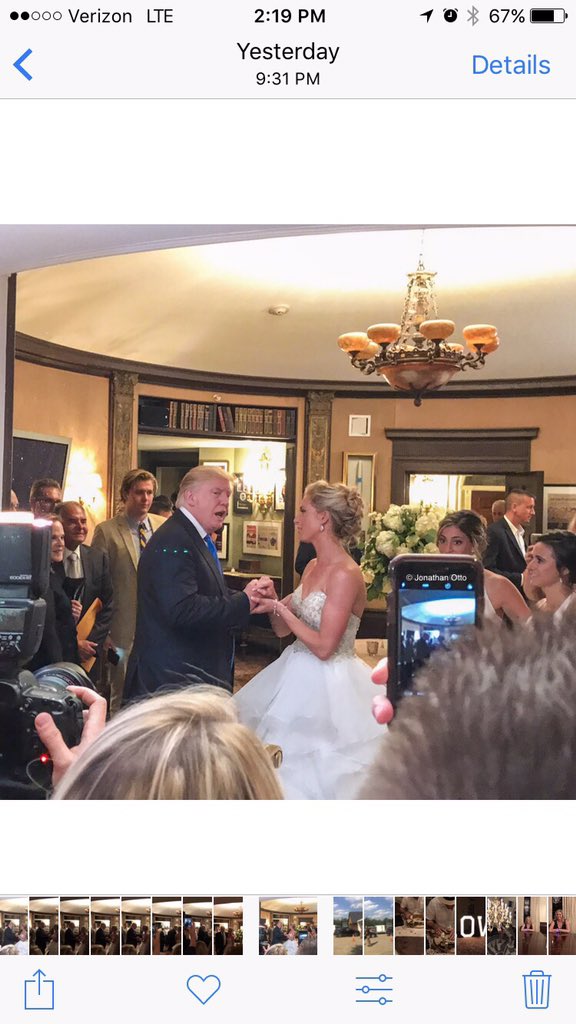MEDIA COMPANIES CAN’T USE YOUR SOCIAL MEDIA PHOTOS WITHOUT PERMISSION, COURT RULES

Back in June 2017, a photo of Donald Trump crashing a wedding at his golf course resort went viral. Jonathan Otto took the photo, shared it with a wedding guest, and it quickly got all over the internet – and ended up in the media. After Otto found it out, he filed a lawsuit. And recently, the court ruled that media using a snapshot from someone’s social network doesn’t constitute a fair use.
The Hollywood Reporter describes how the image got to become viral. After Otto snapped it with his iPhone, he shared it with another wedding guest Sean Burke, who apparently sent it to others. One of the guests posted it to Instagram, and this is where the media companies discovered it. Only a day after the wedding, the photo appeared in the media outlets such as TMZ, CNN, The Washington Post, and the Daily Mail.
Realizing that his photo was used in the media, Otto first asked Burke if he had posted the image, but it turned out to be a relative of the bride. Otto also tweeted to TMZ, asking for credit or compensation. According to the court documents, Otto registered the photo with the Copyright Office a day after it went viral.
The image ended up on Esquire, too (but at the time of writing this, it appears to have been removed). Otto filed a lawsuit against them, and the court recently ruled in his favor: Hearst Communications, Esquire’s parent company, is ruled liable for copyright infringement. The news company argued that it was “transformative use,” considering that Otto snapped the photo for personal use, and Esquire used it for news. But the U.S. District Court Judge Gregory Woods disagrees:
“Stealing a copyrighted photograph to illustrate a news article, without adding new understanding or meaning to the work, does not transform its purpose — regardless of whether that photograph was created for commercial or personal use.”
The judged called in “antithetical” for media companies to simply steal personal images and claim fair use if their articles only recite factual information, “much of which can be gleaned from the photograph itself.” He added that this would discourage amateur photographers from creating works. Also, “there would be no incentive for publishers to create their own content to illustrate articles,” judge adds.
The court decision also explained that, just because Otto is an amateur photographer with an iPhone, this doesn’t mean he has no right to sell his work. As far as I know, his image should be automatically protected by copyright even if he never registers it. But, registering the image makes it easier to file a lawsuit in case it gets stolen.
And when it comes to fair use, there are some pretty clear rules what falls under it. However, transformative use is still kinda “gray area,” with lots of room for interpretation and discussion. This is why I believe Hearst tried to play on the card of “transformative use.” But they were out of luck, apparently. So now, it seems that this case will change some things for both photographers and news outlets. If nothing else, it serves as a warning not to use the term “transformative use” too loosely.
According to The Hollywood Reporter, Otto can be entitled to statutory damages (typically $30,000-$50,000, but it can go up to $150,000). Alternatively, he may take actual damages and profits attributable to the infringement.
[via The Hollywood Reporter]
https://www.diyphotography.net/media-companies-cant-use-your-social-media-photos-without-permission-court-rules/





0 Comments:
Post a Comment
Subscribe to Post Comments [Atom]
<< Home